There are only a handful of manga out there that I believe to be masterpieces. Works such as Berserk, Vagabond and Monster. That come to define a time in manga history, such as Berserk. That are perfect in their execution like Monster, or are a work of art in every panel like Vagabond. Fewer still are the manga that get anime adaptations worthy of their legacy. We need look no further than the recent Berserk anime adaptations for evidence of that. However, I believe that Vinland Saga, written by Makoto Yukimura of Planetes fame and adapted by Wit Studio has gotten, just that. An adaptation that captures the beauty and story of the original peace. That not only adapts it faithfully, but also designed specifically for an anime’s format. Changing what needs to be changed for the new medium, without losing much of the original work.
So onward friends, for honor and glory! The review awaits!
(Disclaimer: I am working to make 50 the new “average”. 70 is not an average score people. 70 is above average. Also this review contains minor spoilers in song names and such. Carry on.)
Art/Animation
As always, the place to start with an animated series like Vinland Saga is it’s production. Here is where it will no doubt face the most dispute, as Vinland Saga is being attacked on multiple fronts. From viewers who love the Sakuga strewn throughout, to those who detest the CGI, to manga readers never satisfied with the art. The attacks never stop, and in a way, each of them is justified. The sakuga lovers need only point to the fantastic action sequences of Arifumi Imai or Shunsuke Aoki, or perhaps the character acting of Masumi Hattori. Each is a joy to behold and you can find numerous examples strewn throughout, making for many memorable moments. Combined with the fantastic direction of Shuuhei Yabuta, which we will get to, and the various animation directors, Vinland Saga looks beautiful when it wants to.
However just as prevalent in Vinland Saga is the CGI. Boats to waves, soldiers to horses, the CGI is difficult to ignore. You can see this most clearly early on in the series, when it’s primarily on the water. Often boats and random background soldiers will draw the eye or interrupt a scene visually. However, in it’s defense, I do believe that the CGI does occasionally bring something good and unique from the series. For instance there are a number of first person angles, as character move through the environment. Or how sleds and horses are grounded in the 3D and touched up with 2D animation to better fit into the scene. Here we can see the CG director Mayu Takehana doing their best with the technology they have. And for as ambitious a project as Vinland is, I can forgive the occasional blemish.
For the last group, there is simply no pleasing them. However I will do my best to try, for a short while. Now to me, attempting to replicate the detailed artstyle of a monthly series in a weekly anime format is absurd. And so is expecting Wit to do that in the first place. However, I do think Wit made a damn fine attempt, primarily through their use of stills, effects and linework. Just above, you can see the face of Askeladd, a leading character. His beard lacks the detail and depth of later manga pages, yet the most important parts in his eyes and facial structure catch the viewer’s eye. Combined with the previously mentioned great direction, I feel this more than satisfies me as a manga reader. Besides, we all know the opening few dozen chapters art had its fair share of problems in the manga.
And of course before I go, it would be an extreme failure to not mention stellar background art. Art Director Yusuke Takeda, along with Art Designers Yukie Inose and Yoshinori Shiozawa did beautiful work on Vinland Saga. You can find these pieces strewn throughout Vinland Saga, with at least one appearing almost every episode. Each one worthy of a desktop wallpaper, or perhaps poster on your wall. These, more than anything else, help sell Vinland Saga I feel. As they give a beautiful backdrop to the multitude of quiet or dialogue driven scenes. Giving the viewer something beautiful to take in while the characters discuss philosophy, religion or maybe just why they pick up a sword each morning. It won’t Imai’s stellar cuts or Takehana’s character acting that I remember for. No, that production honor goes to the background art found in every scene.
Direction
Next we can get to the aforementioned Direction, by previously named director Shuuhei Yabuta. This is actually a difficult section to cover in a way, as a lot of the heavy lifting was done by the author Yukimura. Do you give credit for adapting the work to animation, and fitting these scenes organically together? Or do you give it all to the original author and the storyboarding his manga provided? Luckily, I am not here to portion out credit on Vinland Saga’s production. Merely to rate how much I enjoyed it, and explain why. And oh boy did I enjoy it. I loved how it used depth to play with size, lighting for a character’s mental state and most of all the focus on the eyes. Throughout the series, the eyes become a window into a characters state of mind, just as they were in the original manga.
It would be very easy for me to sit here and gush over scene after scene in this series. From Askeladd’s philosophy that everyone is a slave to something, how it includes both himself and Thorfinn in that description. Or perhaps Canute’s revelation and the depiction of nature and how it eventually reclaims all things. There are a number of scenes, ranging all the way up to the final moments with the finale, that do more than simply mimic Yukimura’s art. Making it clear that Yabuta considered each scenes context within the story, and what was present in the scene. It’s a difficult topic to talk about without explicit spoilers, so the best I can say is this. There is a scene at the end of the finale that was completely and utterly superior to the original manga. And if that isn’t high praise, I don’t know what is.
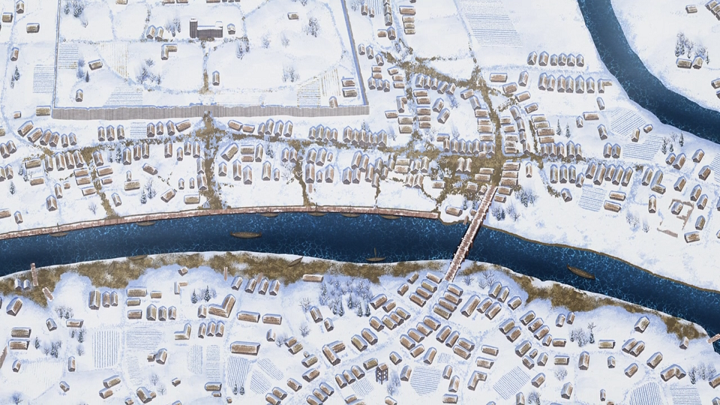
Setting/Story
As if the previous 2 section’s weren’t reason enough to watch Vinland Saga, the setting and story are even better. In case it wasn’t obvious, Vinland Saga is a historical fiction. Based in 11th Century, during the Danish invasion of England by King Sweyn Forkbeard, historical figures abound. Yukimura clearly did his research, as almost every major character can be found either in legend or history. So much so that it’s possible to spoil yourself just by reading up on Danish history. From Canute (Cnut) and Thorkell, to Thorfinn and Leif, these were all real people. Yes, of course there is artistic liberty taken with each character. Whether to make them fit their legend, in Thorkell’s case, or to craft a compelling story from generally dull fiction in Canute’s. However they are all grounded in reality in some form or another. And to me, that gives them something special.
Yukimura also manages to tie in various cultural and religious aspects of the time as well. Depicting the conflict between Norse religion and Christianity, of how the two sides view and treat each other. How the two religions spread and compete in the region. An example of this being one of Askeladd’s soldiers who we see grow more and more interested in Christianity as the season goes on. There are some aspects of this that fall short of course. For instance having every character speak Japanese, when some are speaking Danish or English to each other can get confusing. Or hearing various proper English/Danish names pronounced with a heavy Japanese accent. However these moments come less and less frequently as the story goes on, eventually disappearing all together. Either that or I just got used to them. Regardless, there was a sense of reality all through Vinland Saga.
Of course, this sense of reality is a big help to the story, which is also loosely historical. For the most part, Vinland Saga’s core story is pretty straightforward. Kid goes on journey with his father, father is killed by a mercenary, kid hunts mercenary for revenge. Along the way they get embroiled in a succession dispute for the Throne of Denmark and England, and hijinks ensue. While the story is never particularly complex however, it does act as a great vehicle for the stories of its characters. Putting them in situations where they must grow and change to survive, or die trying. Vinland Saga constantly puts obstacles in the characters ways, revealing more and more about them as the story goes on. Until by the end you are left with a cast of characters completely different from the start. Simply put, while simple, Vinland Saga wields its story expertly.
Characters
Speaking of the characters, this is perhaps tied for my favorite section of this review. Now normally here I would split this into a sort of “Protagonists” and “Antagonists” analysis. I would view each side, how they compete with and support each other as a cast. However I can’t really do that with Vinland Saga, because few characters fit cleanly in to any such basket. The cast is filled, not with characters who are morally grey as few are, but rather with ones that are complex and nuanced. Each one deeper and more closely tied to the shows themes than many Main Characters of other series. Meanwhile the relationships between the characters themselves are beautifully written to all eventually reflect back on our own Protagonist, Thorfinn.
Thorfinn is very interesting as a character, not because of his actual growth, but his place in the story. He is one of the few characters to remain truly static throughout the story. Not changing much after his initial introduction, and actually taking back seat to most of the rest of the cast. Letting their growth, their relationships, reflect on and comment on him by comparison. Meanwhile Thorfinn himself is presented as a largely tragic, pitiful character. One who doesn’t grow, who doesn’t learn, who is still that same kid who 10 years ago lost his father. And who doesn’t really start to move forward from that until the climactic events of the finale, and another loss. While I can understand why some dismiss Thorfinn as an “edgelord” type of character, to me that ignores his place in the story. Vinland Saga doesn’t glorify him. It pities him.
One such example of a character constantly used in comparison to Thorfinn, is Thorkell. Huge, strong and with a love of battle, Thorkell is the Viking Ideal. His life is violent, he lives for simple pleasures and he does it all believe Valhalla awaits him at the end. Yet in his quietest moments, Vinland Saga shows him to be incomplete. Just like Thorfinn, he is empty inside, yet unlike Thorfinn he is aware of it and seeks to fix it. Thorkell is a beast, trying to be something more. Ruled by instinct, loved and admired by those around him because they want to be like him. Vinland Saga uses him to show how flawed the Viking Ideal is. How even though he has everything his culture considers valuable, he is still lacking something that makes life worth living.
A final example, and the best written character of the year, is Askeladd. While Thorfinn is the Protagonist, Askeladd is without a doubt its lead. At least for this season anyway. His charisma takes over the screen, his story is engaging, and the way he ties himself to every character is stellar. If Thorfinn is the center of the wheel all characters turn around, Askeladd is the one driving that wheel. Its difficult to talk about him without spoiling anything really, so the best I can give you is this. His story is one of the best of the year, hands down. He pushes every character forward, and drives them to new heights. All the while never giving up the spotlight. He is a shining example of what Vinland Saga’s cast has to offer. And I haven’t even mentioned Canute, Thors or even half of the main cast.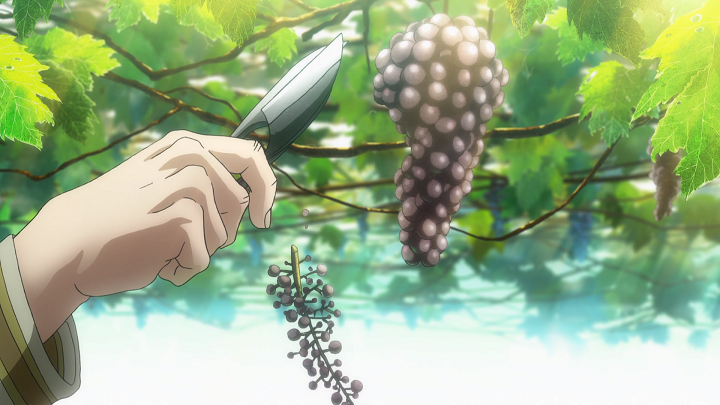
OST/Sound Design
Sadly, not everything can be perfect, though it could be far far worse. The best thing I can say about Vinland Saga’s OST is that it did its job. It never overpowered or took away from a scene, only ever enhancing them. Examples of this include “My Only Friend” which captures well the melancholy of the scene. Or “Askeladd”, a fitting theme for such a character. (Normally I would link to these, however sadly the OST is as of yet unreleased). However, neither of these tracks nor any others ever truly stuck with me, not on their own. They never made me want to buy the OST or listen to them on their own. Instead they conjured images of their associated scenes, they made me want to rewatch the anime where they appeared. So while it isn’t a memorable OST, I did find it to be an evocative one.
The actual sound design however, the foley and effects work, was all around pretty good. From snow crunching underfoot to steel clashing against steel, it was rare for Vinland Saga’s sounds to take me out of a scene. Oh occasionally we got a spear or rock thrown to the sound of a cannon, or an odd scream or something along those lines. But for the most part, Sound Director Shouji Hata did a fine job. I have very few complaints, and they tend to be overridden by the positives. Well done.
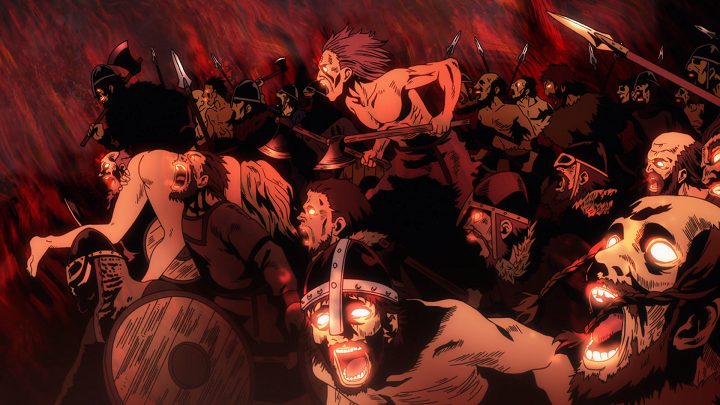
Themes/Message
And finally, we get to my favorite and the most personal of these sections, Vinland Saga’s themes. Bear with me for a bit, because this is going to be a long one. The greatest factor in my enjoyment of Vinland Saga came down to it’s themes. The condemnation of war and violence that permeates every aspect of the series. One which it tackles from a variety of angles, with every conflict in the story centering around it, regardless of scale. From the personal in Thorfinn’s pitiful quest for revenge colliding with Thorkell’s quest for thrill. To the more political and grander scale, in a competition for the throne and Askeladd’s leadership of his men. All stemming from different views on violence and war. Meanwhile in the background Christian and Norse beliefs conflict in much the same way. Each of these is given a stage and each depicts the message differently.
Of these various stages, whether it be personal or political, my favorite is actually the religious. Now I myself am not a religious man, but then Vinland Saga doesn’t really try to convert you either. For throughout the series, Vinland Saga presents both religions as mistaken, as both lead their people to ruin. The Valkyries of Norse Myth are used as justification for the Norse warriors actions, yet is juxtaposed with the bloody nature of war. Taking their goal and exposing it as the terrible thing it is rather than some beautiful religious dedication. Meanwhile for Christianity you can see a criticism of Original Sin and an advocation for the concept of Atonement and Agape. That a single failing is not the end, that man can be better if they so choose to be better. So long as you stand up and continue to move forward, you are not lost.
Yet even within these criticisms, no single character is ever presented as wholly “correct”. All of them come to their own conclusions, their own philosophies, yet Vinland Saga endorses none of them. Take for example the diatribe of the priest, Willibald, and his argument against filial love. How that is nothing more than discrimination, because they do not love all equally. How only in death, can a person find true love, because they give equally to all things. Yet he falls short of the ideal of Agape, because he fails to understand the selfless part of it. How a corpse does not give willingly, it has no choice, and so is not as selfless nor universal as he believes. Even Thors, a character put on a pedestal by the entire cast, is shown to be flawed in his beliefs.
We see this man who has found Agape, who personifies it. Yet Vinland Saga makes it clear that such a love cannot exist in our world as it currently is. Because not all men share the same love, because it is incompatible with the societies that surround it. Agape, as a concept, is figuratively killed in the first 3 episodes, and Thors is the metaphorical representation of it that Thorfinn is chasing for the rest of the season. The condemnation, consideration and themes of Vinland Saga are so thick and permeate so much of the series, you could cut them with a knife. And I love it. The presentation is so complete, so well realized through its story and characters, that you can’t help but pick up on it. And even if you don’t agree with Vinland Saga, you will at least have an opinion on it by the end.
Conclusion
So, all in all, how was Vinland Saga? To me, it was one of the stand out series of the year. There is little else quite like it, not just in 2019, but across anime. And I believe that there is value in it regardless of what you like in anime. Because there are themes and ideas, messages that resonate simply with being human. That whether or not you agree with the final message of Vinland Saga, it will make you think on and form your own opinion on it by the end. So, while it suffers from the occasional production misstep, and the story is as of yet incomplete, I can’t help but recommend it. And I can’t think of a better anime to have ended this year with than Vinland Saga.
Thank you for reading.

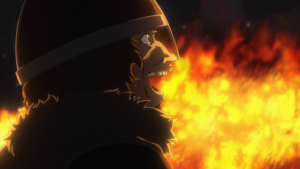
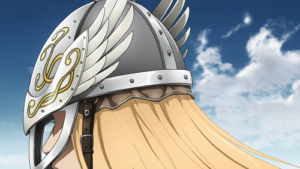
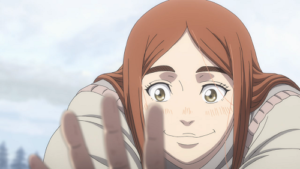
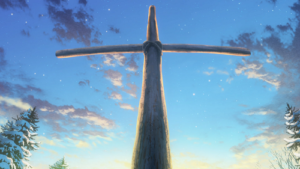
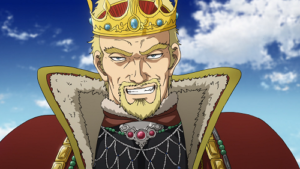
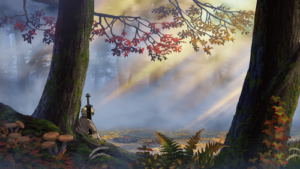
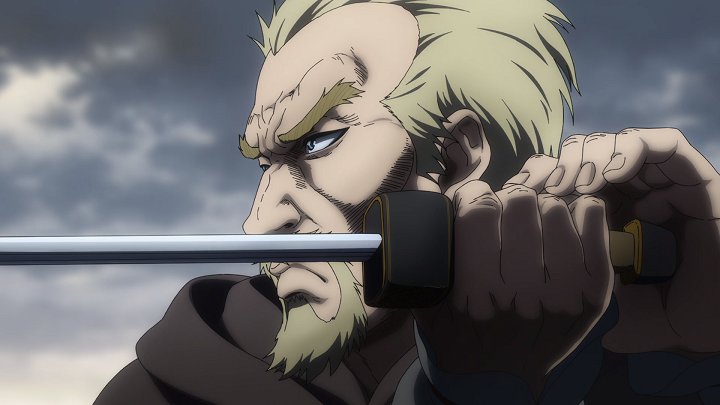
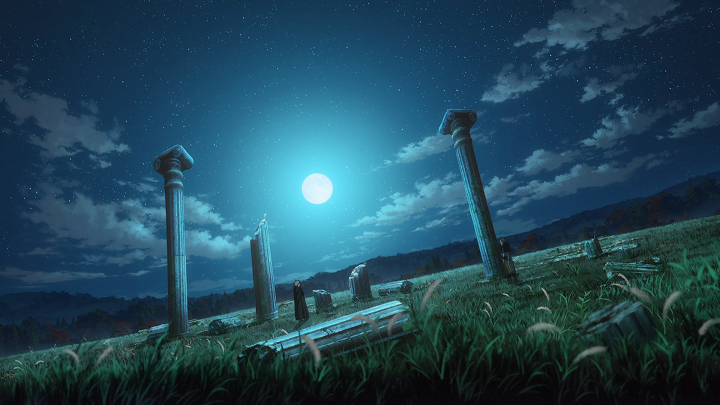
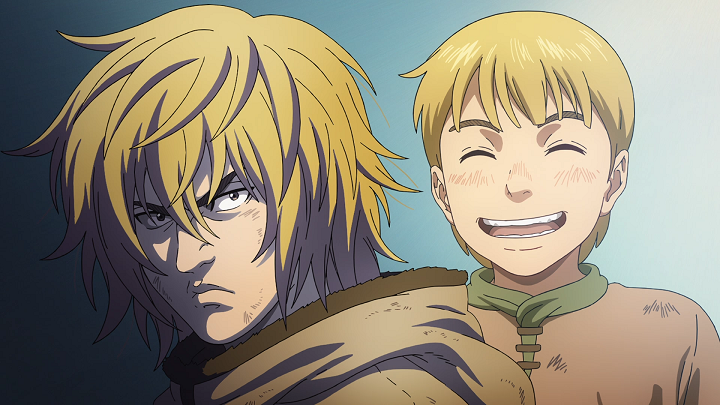
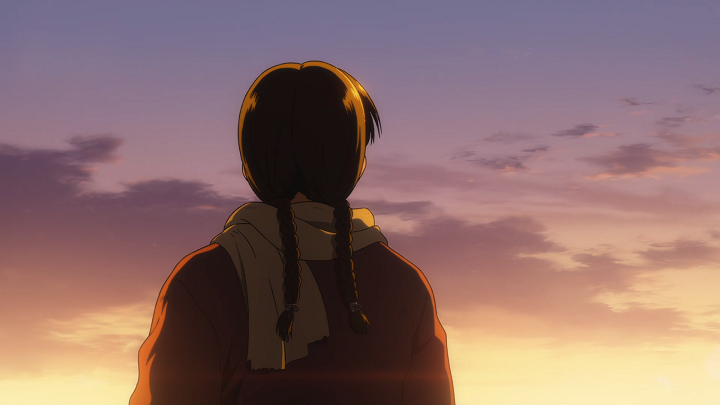
Great review. Vinland saga was phenomenal and the 2 ending scenes were masterfully done.
Also good point about the futility in trying to animate the insanely well detailed art of the manga in a like for manner. Berserk 1997 took a similar approach with still shots and it seems to be the way to go.
Berserk 97 is a great example. There is actually a video out there on the subject on youtube, comparing Picturesque anime to Kinetic anime. Picturesque being ones like Berserk 97, which focus on insanely detailed stills, postcard memories its called, for telling its story. Meanwhile most modern anime have moved towards Kinetic animation, gifable moments rather than screenshots/wallpapers. Things you can find on Sakugabooru rather than art books.
Its a really interesting topic in my opinion, and definitely something worth talking about sometime.
As for the review, thank you! I agree, the ending with the dagger was phenomenal, one of the main instances the anime indisputably improved on the original manga and made it clear how they were trying to use Anime as a medium rather than just straight adapt it.
“(DISCLAIMER: I AM WORKING TO MAKE 50 THE NEW “AVERAGE”. 70 IS NOT AN AVERAGE SCORE PEOPLE. 70 IS ABOVE AVERAGE. ALSO THIS REVIEW CONTAINS MINOR SPOILERS IN SONG NAMES AND SUCH. CARRY ON.)”
If you want the middle point to be the average, I’d recommend using the 1-5 scale (or returning to psgels’ original scoring method of using stars). That seems to be the only scale where people and mathematics agree that the mid-point is the average. Reviewers of everything have spent ages trying to make the audiences understand that 50 (or 5 on 1-10 scale) is supposed to be the average, and they have always failed (probably because the psychological effects trump mathematical reasoning).
Its a discussion I have had many times, and its always interesting to have. Because, really, you are correct. A 0-100 scale doesn’t fit well when you want 50 to be the average, at least not for reviews. Most likely due to the American/Western schooling system having 70 be the minimum passing grade. (Yes I know most of the world isn’t America, but a lot of media is based in/from there and affects it). However I have always run in to two issues when I think about changing the system.
1) A lot of places, like Anilist est, don’t really support such a scale when I want to post my reviews there, to drive people here.
2) I don’t want to break from the convention of the rest of the Authors here. For better or worse its been going for a long while, and while Tradition is typically not a strong argument, I think there is something to be said for it when sharing a space with many others.
All that said, if I could, I would do away with ratings entirely and just go with a “Watch it, stream it, skip it, buy it, love it, etc” sort of scale. I think it lends itself more to making people read the review, rather than just the score, because a score is meaningless without the words behind it. Granted its a lot of words, cause I like to write to much, but hey. I have a lot to say.
So, tldr, thank you. It is something I struggle with every time I write one of these, and no doubt something that will get revisited/analyzed in the future. I appreciate the advice and I hope you enjoyed the review
When I started the manga for this back in 2007, Thorfinn was the character that had my attention, years on, re-experiencing the story through the anime, I’m far far more attached to Askeladd and Canutes character arcs which feel far more stronger and grounded.
I just got around to watching this, after watching the first episode a while back and deciding there weren’t enough dragons and manticores in it for me.
Boy, am I glad went back for another shot at it. This a deep work, deserving of wider recognition. It’s like Game of Thrones, but just so much better and purposeful. My brain likes the black and white-ness of a good guys vs. bad guys, but this time, the characters were so beautifully fleshed out and complicated that I ceased to obsess over allegiances.
It moved me.
Im glad! Its definitely a slow burn that doesn’t really fit a lot of modern anime, but Yukimura (the author) did a fantastic job with the series and I really hope they make a Season 2, as this was all just a prologue to the greater series
After Aot the most thrill i got was in promised Neverland.I love Vinland saga.And yeah scene when that mother found out that thornfinn had come as a spy for danes was so emotional. This is anime is really a masterpiece.